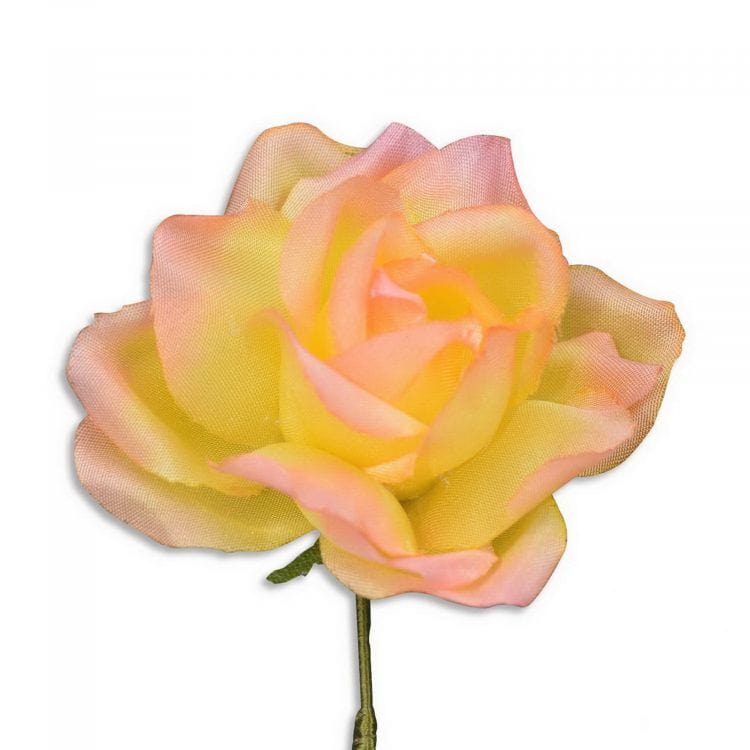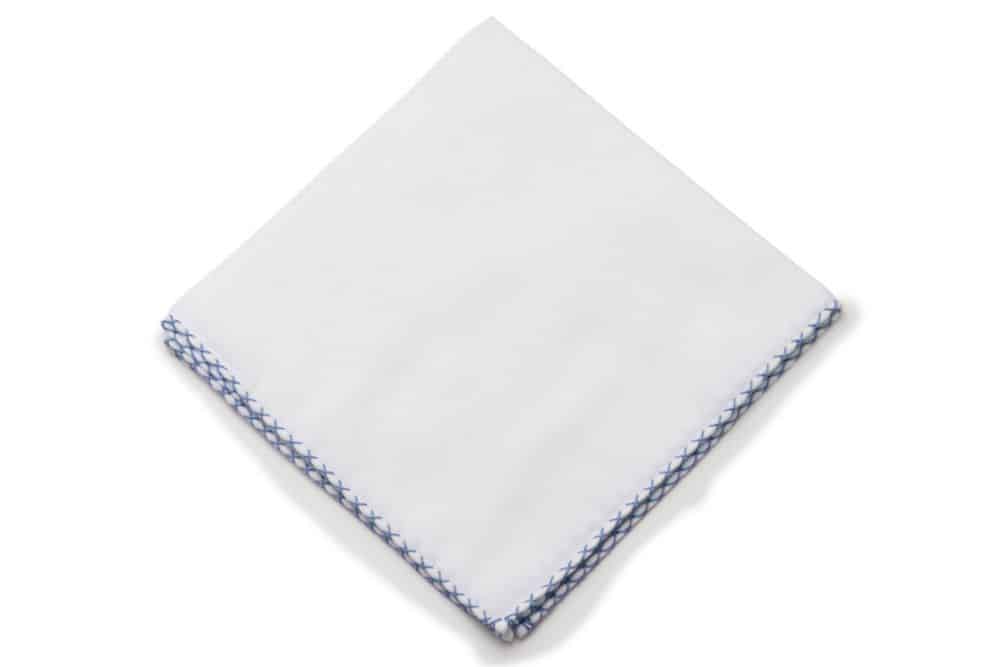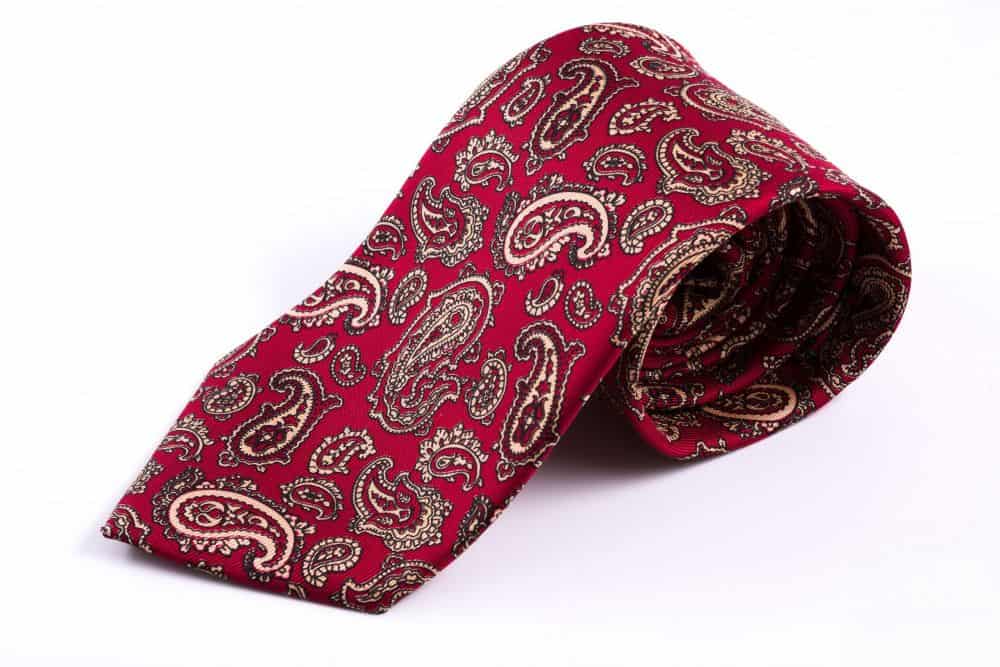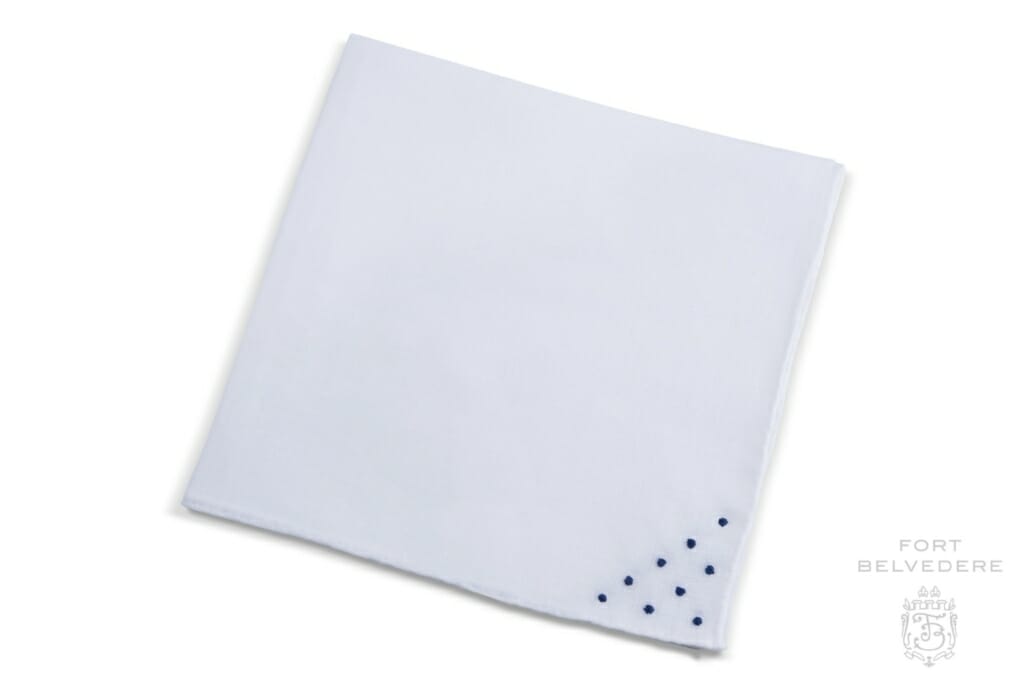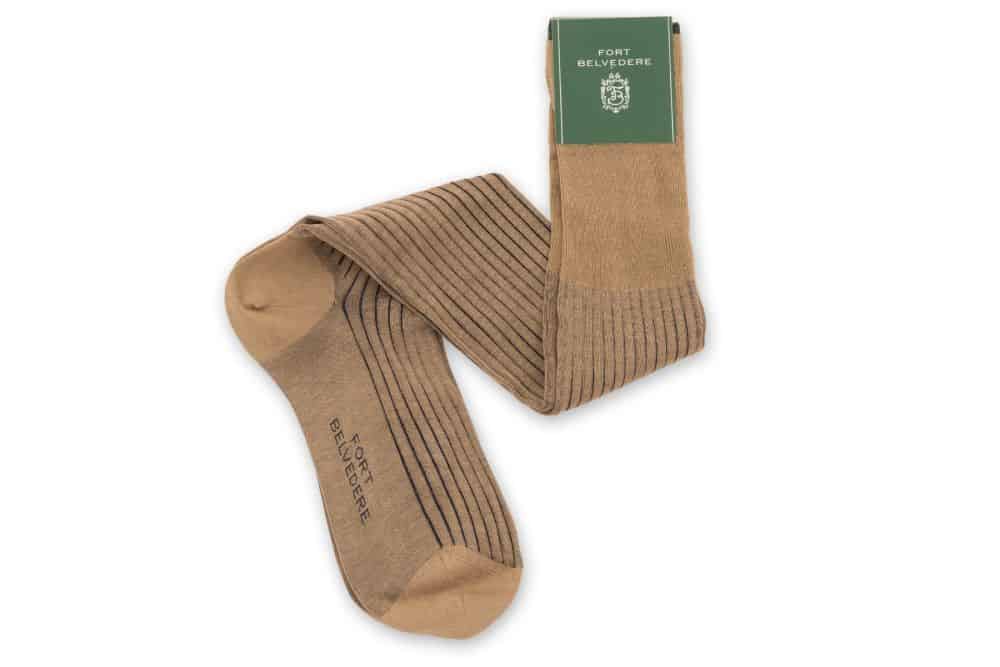When in Rome, do as the Romans. And there’s probably no tailoring house that is more closely associated with Rome than Brioni. We’ll take a closer look at the brand Brioni, specifically their jackets, to see if they are a good value and if they stand up to their higher price tag. We talk about the features, cut the jackets apart, and look at the history of this great Roman tailoring house.
Founded in 1945, Brioni definitely made their mark as innovators in this space. On their website, their least expensive jacket starts at around three thousand dollars, but you’ll have no problem spending five thousand dollars or more on a suit or a jacket there.
Naturally, with a price tag that high, we wonder what could possibly justify that price. Just like with many heritage brands, Brioni has undergone some changes. We’ll take a look at the brand’s history, the features of their jackets, and more to know if they’re really worth it.
History of Brioni
But, first, let’s dive into some history of Brioni. It was founded in 1945 by master tailor, Nazareno Fonticolo, and the businessman and salesman, Gaetano Savini. Together, they built the New Roman Clothing Empire. The original store was located at Via Barbarini, where they catered to wealthy Romans who wanted a nice Roman suit.
Seemingly, that must not have been an easy time after World War II. The Italians were still dealing with the depression, but it seems like there are always some wealthy people who are willing to spend money on high-end clothing.
The name “Brioni” is a tribute to Isole Brioni, which is an island that is now part of Croatia. At the time, it was a popular Italian holiday destination. It seems to be, the name was meant to conjure up images of luxury living, decadent refinement, and all aspects of “La Dolce Vita” or “The Sweet Life.” The brand Brioni came to prominence during Il Boom, the economic miracle.
During the time, Italy saw a rapid expansion of economic growth, and if you’re more interested in that part of the history, check out our post on why Italian men are so stylish. I mentioned earlier, they were innovators, so they helped ride in that wave of Italian Mania by actually hosting the very very first global menswear catwalk or fashion show in 1952, in Florence’s Palazzo Pitti.
Why Are Italian Men So Stylish? Here’s Their Secret…
Looking back, I wonder if it was one of the precursors to today’s Pitti Uomo. They must have seen it as a success because, afterward, they rolled out this type of event throughout other countries. For example, they helped North America’s first menswear runway show in New York in 1954, and then they also engaged in what you would call today “influencer marketing.”
Obviously, back then, there was no YouTube, so they went with movie stars. Clark Gable, Cary Grant, Rock Hudson, Henry Fonda – they all had Brioni garments in their wardrobe. I mean, even men who typically wouldn’t associate with fine Italian suits, such as John Wayne, were wearing Brioni.
As can be seen from their 50s fashion illustrations, they were definitely more fashion-forward and not afraid to incorporate details, such as horizontal seams and a jacket, into their outfits. They also didn’t shy away from bold colors, patterns, and textures.
At the time, the Brioni silhouette was rather slim, and even the shoulders were a bit more natural and less padded than what you might have seen otherwise in places like the US for example. Of course, with the Italian climate being somewhat warmer, they Incorporated more lighter-weight fabrics into their garments.
Things were going so well that, by 1959, Brioni decided to open a state-of-the-art factory in Penne, Abruzzo, the hometown of Fonticolo. It’s one of the first brands who decided to enter the ready-to-wear business with men’s, fashion-forward garments at a time when most spent in Italy they probably still preferred a bespoke suit. They also didn’t just know how to market, but also how to sell. So, they were one of the first ones to introduce trunk shows.
They also had an early made-to-measure service called “su mizura.” Another remarkable thing they spearheaded was this idea of becoming a total brand. So, rather than just selling jackets and pants and suits to customers, they decided to add in accessories, shoes, hats, shirts, and so forth, so their customer could dress head-to-toe in Brioni and get that lifestyle vibe.
Today, you look at Ralph Lauren, you may think, “Well, that’s not anything special,” but they did it in the 1950s. But, by the time the 1960s rolled around, Brioni had established themselves firmly, and they weren’t afraid to push the envelope when it comes to color, textures, and patterns. Even for today’s dandy standards, their jackets are quite bold.
With being so successful, they realized that they had to ensure a steady stream of up-and-coming tailoring talent, and so they established a tailoring school in Penne called the “Scuola di Alta Sartoria” or “School of High Tailoring.”
While it definitely helped to cultivate the next generation of Italian tailoring craftsmen, it was also paired with the understanding of modern manufacturing. That meant, rather than having one person making one suit or jacket from start to finish, they started to specialize. It really became an assembly line operation where some people would only do sleeves; others, only the collars; others, only the pockets, and so forth. Fonticolo died in 1981 and Savini, 1987, so the company needed a new direction.
In 1990, Umberto Angeloni became the CEO of the company and radically diversified. That meant you could now get Brioni casual wear, sportswear, women’s wear, and of course, accessories. The Economic Crisis of 2009 hit Brioni hard, and so, investors made demands to move production out of Italy, but the company resisted it and kept everything in Italy. Instead, they expanded their ranges in more affordable, ready-to-wear lines.
In 2011, Brioni was acquired by the French group, Pinault-Printemps-Redoute, which is now known as Kering, which is a big player in the clothing industry. Of course, they tend to make the company more profitable because, for decades, Brioni had resisted the overall more casualization of menswear.
So, following the acquisition, you can definitely see that there was an updated cut. If you look at the more modern jacket, you can see, it clearly has a much slimmer lapel. As you might recall, in the 2010s, slim lapels were all the rage. This stylistic reinvention (or whatever you want to call) it was undertaken by the art director, Brendan Mullane. Of course, he could have been quite radical and taken Brioni into a very different direction and become a streetwear label. Instead, he decided to modernize his styling, while still paying homage to the heritage of the Brioni’s style and DNA.
In 2017, Justin O’Shea and Nina-Maria Nitsche continued that vision with the brand. They came up with a Primo suit in 2017, which was revamped in 2019. But, it was Brioni’s take on their new, classic, normal cut, paired with a marketing campaign that included many celebrities, it helped to revitalize the brand with a younger clientele. At the same time, Brioni was also leaning more towards the luxury end of the market, incorporating cashmere, fine silks, and even stuff like vicuna.
Today Brioni’s CEO is Mehdi Benabadji, and the creative director is Norbert Stumpfl. They’re still a massive operation, operating more than three dozen stores and employing more than a thousand people in their tailoring facilities. That includes up to 400 artisanal tailors. At their peak, Brioni was able to output 70,000 suits a year. According to press releases for the parent company Kering, it seems like Brioni had a strong rebound in 2022.
Brioni Ethos and Industry Position Today
As they were able to produce bold jackets and suits, overall, Brioni is still a bit more formal-focused.
With a suit, the style of it is just one aspect. The way you feel and the confidence you portray when you know your suit costs ten thousand dollars is another thing. Typically, a Brioni suit will have a very nice fabric, meaning, when you touch it, the hands feel supple, luxurious, and soft. In my experience, they’re similar to Kiton on that level, even though I think Kiton is usually even a bit softer. Isaia, though, also an Italian company, tries to also appeal to that.
Comparing it to Ralph Lauren’s Purple Label suits, they have a slightly different finish on a fabric, which makes a light sparkle in a different way and feels different. Brioni suits are also not Neapolitan, so you don’t see double rows of pick stitching that is louder and more casual, so to speak. Brioni suits are more at-home at the boardroom than at Pitti Uomo, and of course, if they’re good for business environments, they’re also worn for evening events. That’s the Brioni ethos I knew growing up.
During the last decade, they tried to shift away from that and more towards “no business, no tie,” and more appealing to young men. They also introduced more luxury materials, which are more expensive, and emphasized aspects of sustainability.
Product placement in movies these days is a huge industry, and Brioni continues to play that game. Pierce Brosnan as James Bond or Daniel Craig, Tom Hanks in “Angels and Demons,” for Tom Cruise, Michael Fassbender, Jake Gyllenhaal, and last but not least, Brad Pitt, all wearing Brioni.
Today, they offer ready-to-wear and made-to-measure-slash-bespoke jackets. In this review, we focus on ready-to-wear. We haven’t examined their made-to-measure or bespoke product. Ready-to-wear jackets start at around three, with most of them being more than four to five thousand dollar range. For a made-to-measure garment, plan to spend 10,000, especially if you want a nicer material.
Ready-to-Wear, Made-to-Measure & Bespoke – Terminology Explained
A Closer Look At Brioni Jackets
Styling
Stylistically, we got two Brioni jackets, both in the same size, to just see how things have changed. The modern jacket has slim lapels. They’re both single-breasted, two-button jackets. They both feature flat pockets. The modern jacket, though, has no vents. The other one has a double vent. If you look at it, the overlapping flap in the back, looks rather small, but it’s held together by a little string so your vents don’t gap. It’s a nice detail, which some brands still use today, but it’s often forgotten. And if you have a big bum like me, it’s a problem.
Stylistically, the way the front quarters are cut, you can see the curvature remains the same. I’d say, for a single-breasted these days, it’s rather closed, but it’s very classic. If you look at the length of the jacket, it got shorter by three centimeters or one and one-fifth of an inch, which is in line with general stylistic trends. It also looks like the closing button moved up slightly on the new jacket. But, overall, the design of the pattern and the darts remain the same.
For example, both Brioni jackets have the dart that expands from the back of the front pockets, all the way down to the hem. In terms of shoulder lines, both do have padding, but you can see that the old Brioni padding was noticeably thicker than the modern one.
Again, this is in line with general trends. If you buy a Neapolitan jacket today, it will almost certainly not have any padding. But, when I saw a vintage, custom-tailored jacket from Naples, it had padding, too.
The sleeve heads remained roughly the same. So, the fabric from the sleeve is folded down. The fabric in from the shoulder is folded up, so you don’t have much of a rolling or a waterfall sleeve head. The sleeve lining is sewn in by hand on both of the jackets and feels good. A lot of sleeve lining on the old jacket was plain off-white; in the new one, it has a stripe, which is maybe something that just changed. I think many jackets have a striped sleeve lining.
But, interestingly, the main lining, both is Brioni branded with a polo horse. So, typically, today, when you think of “polo,” you think of Ralph Lauren, but Brioni utilized this pattern even before Ralph Lauren did. But, he just made it more popular.
Apart from the ready-to-wear jackets, Brioni also offers double-breasted jackets with peak lapels, three-button jackets with patch pockets, stuff in muted colors, various jewel tones, as well as pastel tones. You could even get shiny, green silk evening jackets, which I would associate more with a prom tuxedo rental than with a multi-thousand-dollar suit company. Of course, they also have the obligatory checks and blats with fabrics and lots of yarn-dyed colors, giving you that rich depth of color.
In line with their tradition, they also offer a range of dynamic evening options, which are quite fun to look at. Personally, I think I might get a headache looking at that last jacket for too long.
Features
Lining
In terms of the lining, I was surprised to see that even the modern jacket had a full lining because, these days, going for the half-lined or unlined look is definitely more popular with younger men. Just touching the shoulders, the new jacket definitely felt softer and that’s also partially because it’s a thinner pad. Looking at the irregular stitching on the collar felt, you can tell it is sewn on by hand.
Both colors are very comparable; somewhat stiffer interlining, but it’s not too stiff, and it suits the jackets well. Preston was surprised to see that both collars were fixated with a machine. The cheapest way to do things is to glue them on, and they don’t do that.
The traditional way to do it is to do it by hand, and typically, that’s what I would expect if someone tells me that it’s a hand-tailored jacket. But, it is much faster and much more economical to use a strobel machine. These machines are quite cool to look at, and they save a lot of time in the manufacturing process, with a result that is, in my opinion, indistinguishable from a handmade product. So, I totally see why they were going for it.
Fronts
Looking at the jacket fronts, both jackets are fully canvassed. The old jacket definitely has a slightly stiffer interlining, but both are by no means stiff. If you compare it to many English, American, or German bespoke jackets, these interlinings are on the softer side, with the newer jacket being even softer than the old one.
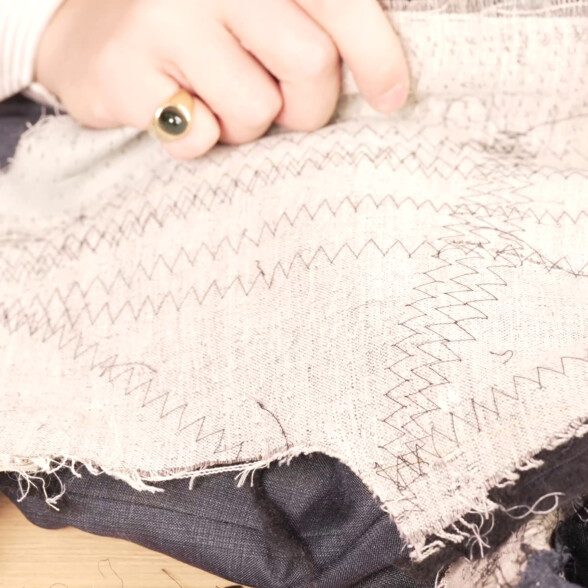
Features
Stitching
This stitching is proof that they use machines and not handwork.
Again, this is not a half-canvas jacket or a glued jacket, which puts it in a fully-canvas jacket that is sewn, but all the stitches, if you look at them, they’re all highly regular. That’s proof that they use machines and not handwork. Now, if you work with an Italian bespoke tailor, especially one that is maybe more seasoned, chances are they’ll do everything by hand, start to finish.
So, even though the price may be the same or less with a tailor, you get less handwork with a Brioni jacket, and that’s not just a more recent happening, but it also happened back in the day.
Buttonholes & Buttons
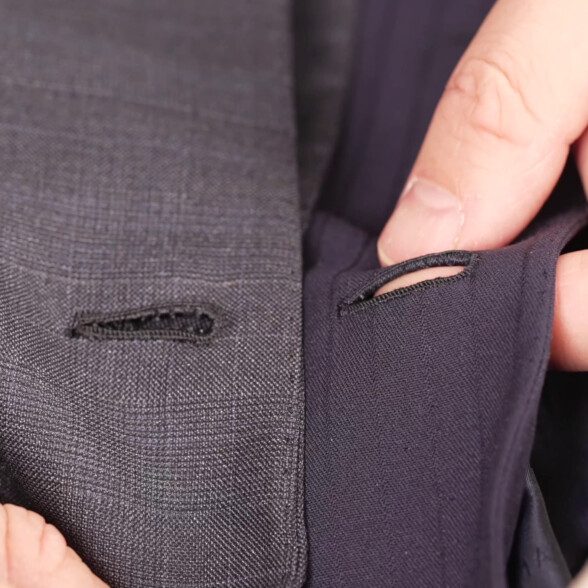
features
Buttonholes
Looking at the front buttonholes, they’re certainly both handmade, just like the lapel buttonhole. Comparing them side-by-side, Raphael finds the older ones more appealing. But, that’s just a personal preference.
Looking at the sleeve cuff buttons, it’s interesting to see that the old Brioni jacket doesn’t have any because it wasn’t a ready-to-wear jacket, and it’s much easier to alter the sleeve length if you don’t have fixed buttonholes already cut into them. On the other hand, the one Brioni jacket has working surgeon cuffs, and while that used to be a hallmark of a high-end garment, that is certainly no longer the case. But, I can see that if H&M offers that feature, Brioni felt they also had to offer it.
Personally, for ready-to-wear, I think it’s a bad idea to have pre-cut buttonholes because it requires your alterations tailor to shorten the sleeve from the top; and that chances that they screw up the sleeve head, and it won’t look again like it did, in the beginning, are quite high.
The pick stitching on both jackets appears to be made by hand. Not entirely sure if there are new machines out there, now that can completely mimic a hand-stitch with a slight irregularity and the thread that disappears on the back, but typically, I’m pretty sure this is both handmade.
The new jacket has horn buttons; the old one seemingly Kuroso buttons, but frankly, Brioni has a wide line of buttons, so I don’t think there is much of a change. They have mother-of-pearl, horn, and Kuroso. It’s really the standard for most high-end men’s garments.
Vents
Stylistically, the biggest surprise for me, personally, was that they got rid of vents. No center vent, no side vents, but a ventless jacket, and that was something that was popular in the 20s and even the 30s because, when you stand, it looks even better; but when you sit, or when you have the hands in your pockets, it is not looking as favorable anymore.
Sizing
Size-wise, Brioni comes in a huge range. US size going from 34 to 52. I think it doesn’t do a good job of describing all the features of the jacket. In terms of variety, they certainly have a lot of breath and can cover any type of event or occasion you might want to think of.
Workmanship
When it comes to the suit construction overall, Brioni also rolls that into their marketing. So, apparently, there is a 220-step process and over 24 hours of workmanship that go into a garment. I would say, compared to other brands, Brioni offers a good amount of information about what they do in their jackets. Of course, as an enthusiast, I’d like to learn even more about the softness of the interlining and what’s special about it. With a larger company, I can see how that would be difficult.
After all, it seems to me that Brioni is not catering their garments to the value-conscious, quality consumer. Instead, they emphasize access to over 800 different fabrics and the luxurious aspect of their items. There’s definitely an emphasis on cashmere, silk, and wool. There are also various blends, such as cotton and silk or wool and silk, but they don’t talk much about the fabric, the fineness of the wool, the hand, or what you can expect, so it’s probably better to go to a store and touch it. Apart from the fabric offerings, they also had suede and nubuck blazers, or a dinner jacket with silk and 24-karat gold if you want to be the shining star of the night. I assume it’s from their Alric Goldfinger collection.
Comfort
In terms of the feel and the comfort of the jacket, even the older Brionis were rather soft and comfortable. The modern one is even slightly softer, which I think is nice. The arms of the modern jackets get a little smaller; on the older ones, they were a little roomier.
As you know, we’re big fans of small armholes that give you a better range of movement. But, if they’re too small, it’s also uncomfortable. In the interior, you have more pockets on the modern jacket, though, stylistically, they’re inset in the same way as the old pockets.
Looking at most ready-to-wear jackets these days and their sleeves, they’re typically cut rather slim. Personally, we’re big fans of sleeves that are cut a little wider, especially the upper part because it gives you more range of movement and leads to more comfort, wearing the jacket in an everyday setting.
In my experience, Brioni jackets feel comfortable. They definitely feel more comfortable and have a greater range of movement than with most ready-to-wear jackets. At the same time, they’re not perfect. I wish the sleeve were even bigger.
Overall Assessment Brioni Jackets
Looking at the different jackets, they seem to have the same sleeve size, so they didn’t really update the sleeve too much. One of the things you typically don’t won’t get with most ready-to-wear jackets is fabric reserves, so you can make something bigger if you gain a few pounds.
Brioni, on the other hand, offers quite a bit of cloth reserve for a ready-to-wear jacket, while on the older jacket, the sleeve lining and the body lining were still sewn by hand, and you can see that by the irregular stitch. On the modern jacket, you can see that it was sewn in by machine.
Functionally, I think I can’t perceive any real benefit of a hand stitch. Typically though, overall, you can say that a hand stitch is more flexible than a machine Stitch, and so if everything is hand stitched, your jacket will feel softer and more comfortable. Now, the sleeve lining on both jackets is sewn in by hand.
The modern jacket also has this extra armpit sweat protector layer that the old one didn’t have. Overall, both canvases or interlinings seem to be of high quality, with the modern ones being softer.
Is A Brioni Jacket Worth It Or Not?
Stylistically, Brioni appeals to someone who doesn’t want something that is too outlandish in terms of silhouette and styling. You can certainly get bold with fabrics, but in this day and age, you can also do that with lots of made-to-measure companies or bespoke options. I think Brioni is good for someone who doesn’t want to think about a style and just buy something, so they know what they see is what they get.
Personally, I’m not a fan of predefined styles. I prefer side slits. I prefer a waterfall sleeve head and a somewhat wider sleeve. In terms of workmanship and construction, you truly get a full canvas garment that is of high quality. Is it the highest quality that you would get from a bespoke tailor when it’s all handmade? No, absolutely not. Is it on par with high-quality, made-to-measure suits or other high-quality brands? Yes, absolutely.
Considering the high prices per unit charges, I would have expected more handwork. So, overall, in terms of construction, I would say quality is very good; value is more on the below-average side. But, that’s a lot better than our Louis Vuitton duffel bag, which is made out of PVC, and you pay a high price tag.
Louis Vuitton Duffle Bag: Is It Worth It? – Luxury LV Keepall Bag Review
Frankly, with all the online talk about a stylistic change of Brioni and how they deteriorated, I was expecting more of a change on the inside of a jacket, and I was surprised how little had actually changed. It all is a very comparable and similar quality. Frankly, it’s very similar to what we’ve seen in the Allen Edmonds post, where we cut apart different shoes from different eras.
Cutting Apart 50 Years of Allen Edmonds Shoes (Value Review)
There wasn’t as much of a change as people make it out to be. Stylistically though, yes, there has been a clear change. And whether you like that or not is, of course, subjective. As a classic menswear enthusiast, I think I like the older style more with the lapels that are more than the nine-centimeter range, which is just a more classic width. Not the seven-and-a-half-centimeters, which is just rather slim.
And then there’s, of course, the history the name cache of the brand Brioni. Just like with any other luxury brand, you pay an upcharge for that, and if you’re in a market for that, you probably care to a certain extent about that. Now, if you purely look at the construction of the garment, at the fabric, and the style, can you get a comparable garment elsewhere for much less money? Absolutely! And under that aspect, I think Brioni is not worth it.
With all that being said, I think Brioni can be an exceptional buy when you find it secondhand. Over the years, I’ve seen many Brioni jackets on eBay or at secondhand stores. And considering that at one point in time, they made 70, 000 suits per year, there are still a lot of them out there.
So, if you can find a Brioni suit or a jacket in a nice cashmere or silk or cotton blend, in a cool color, and it costs you $100 to $300, I think it’s an exceptional value. Also, one thing to consider is that, at the end of the day, all grear brands can command a higher price for a comparable product than other lesser-known brands. That’s just the gist of building great brands.
With that being said, personally, for me, Brioni is not worth it at a new price level, but definitely when you find it second-hand or on places like Poshmark or eBay. If you’re not sure how to shop for secondhand stuff, we have different guides about how to shop in a store or on eBay and what to search for, so check those out.
How to Shop for Classic Menswear Online
Outfit Rundown
The jacket I wore here today is, of course, from Brioni. It has an unusual orange, corally color. It is definitely a blend. I think with some wool and silk. It’s lightweight, has a nice hand, and is smooth. It’s definitely on the longer side for me. It has the side vents; still, it has the classic, nine-centimeter lapel width and a gorge that is not too extreme.
I bought the jacket because I liked the color shade, but I wasn’t willing to do something custom in this color, new, because I knew I wouldn’t get too much wear out of it. It’s great for summer, though, and I’m pairing it with a linen shirt in a Cooper collar that can be buttoned on top, from Spier & MacKay.
My pants are a sand-colored pair of prototype chinos from Fort Belvedere, and my socks are navy and khaki from Fort Belvedere, and my shoes are Ralph Lauren Purple Label for Edward Green. They are an interesting penny loafer, with a nice brown and off-white suede. So, quite bold, but I like it for summer, and I thought it goes well with this kind of jacket.
My pocket square is also from Fort Belvedere. It is white with hand-rolled edges and hand-embroidered blue dots that pick up the color of the shirt that’s tying everything together. To complete the more dandyish, rakish color palette of my bold jacket and my shoes, I added a small boutonniere, which is handmade in Germany by Fort Belvedere, as well as a ring, which also has a coral or some form of semi-precious gemstone in it, that is orange and picks up the color of the jacket.
